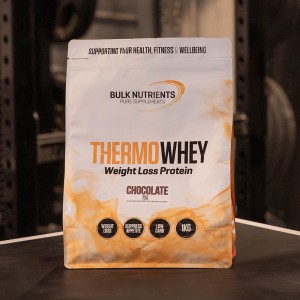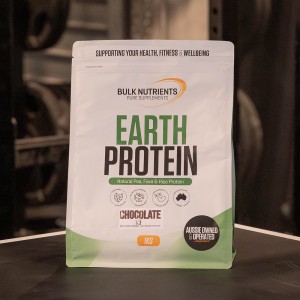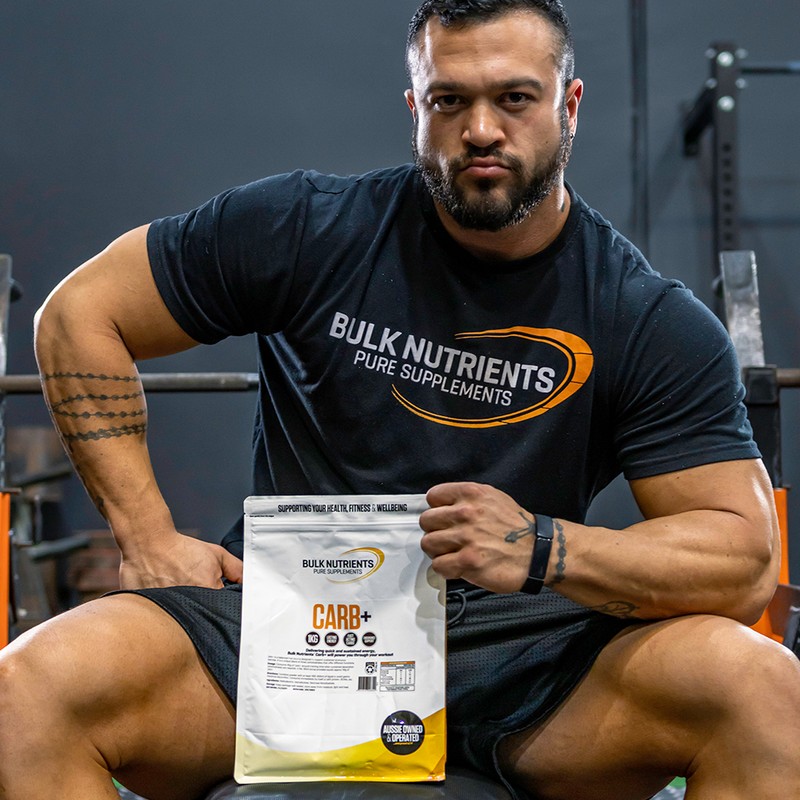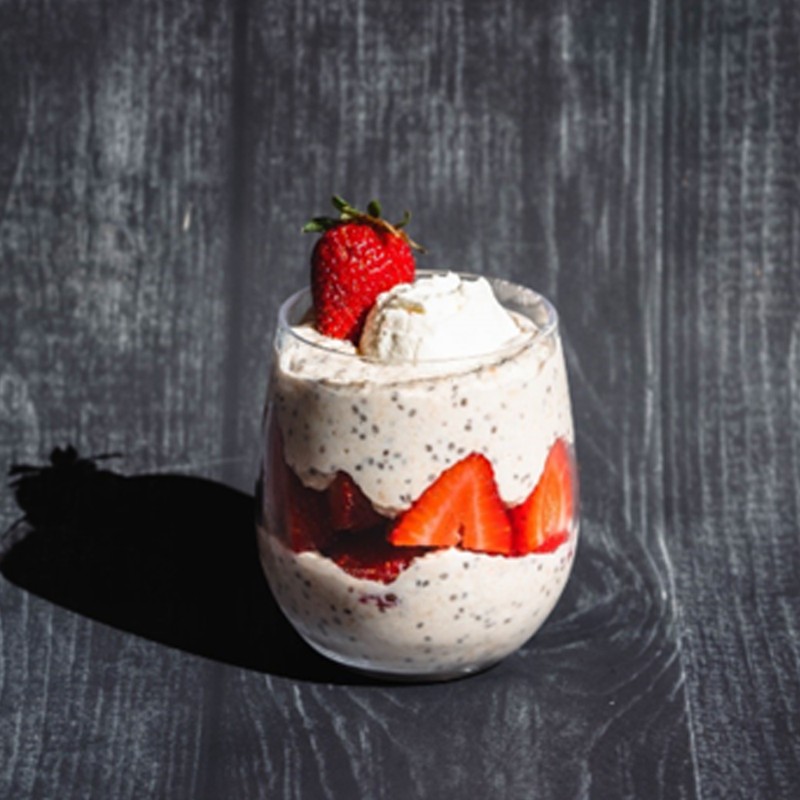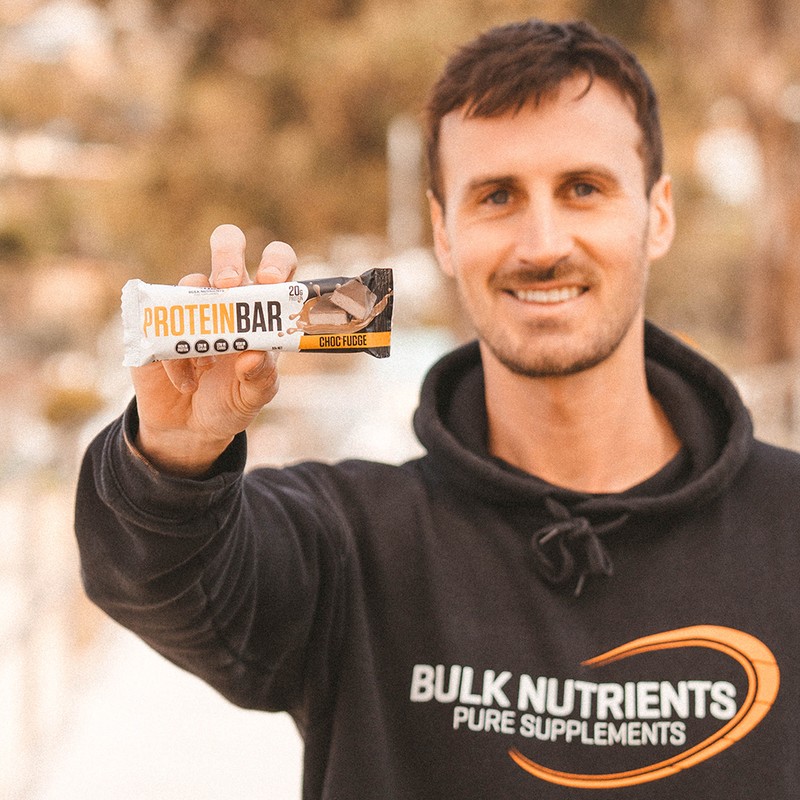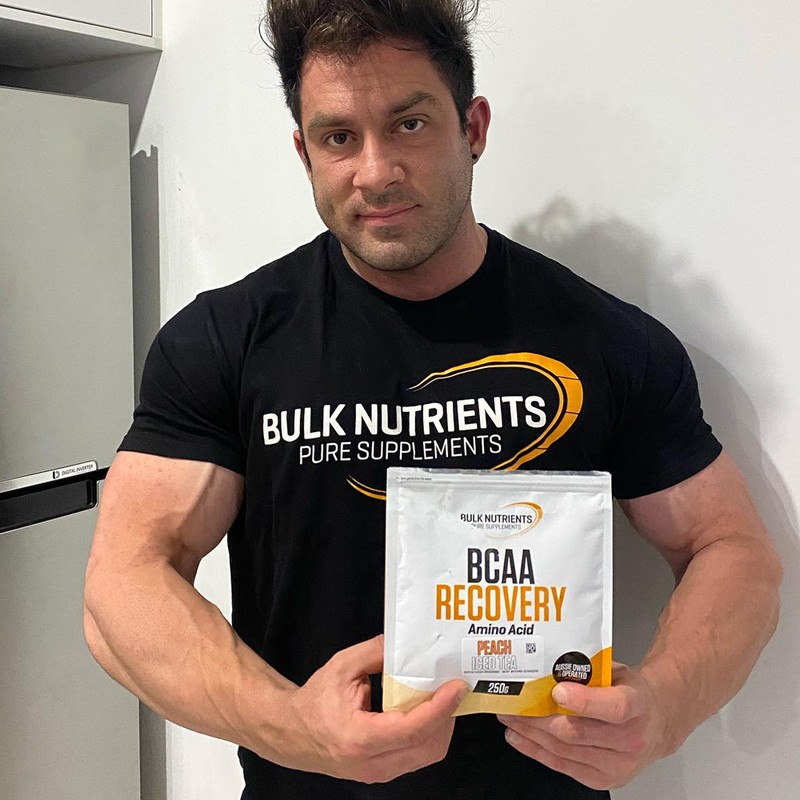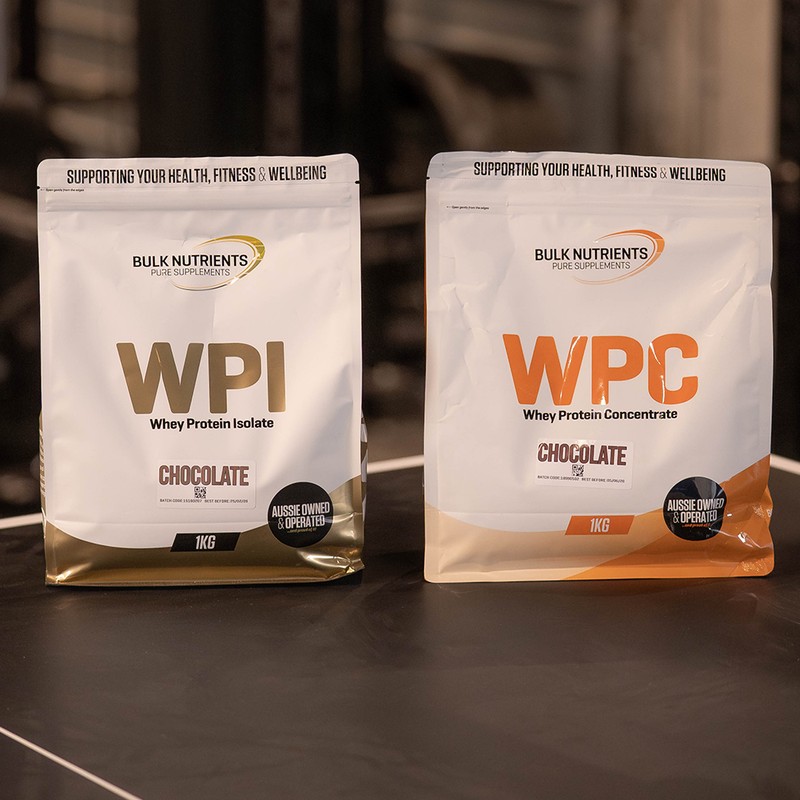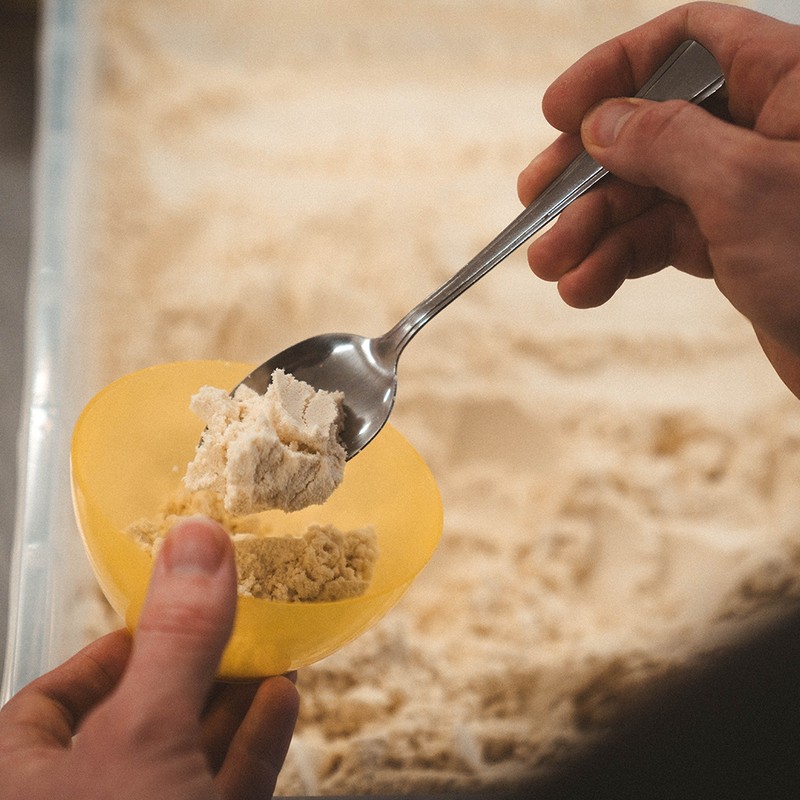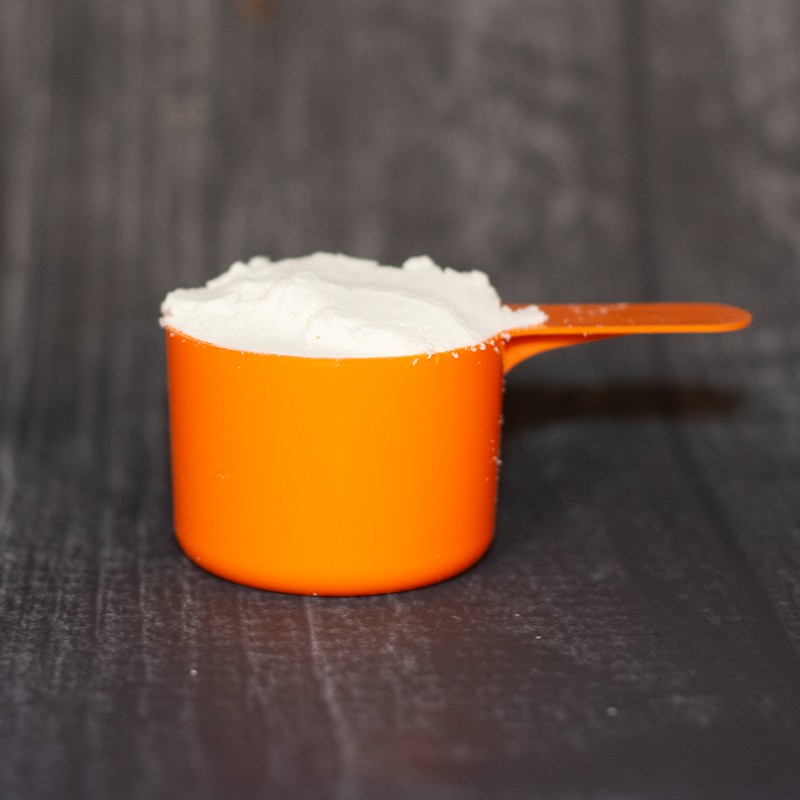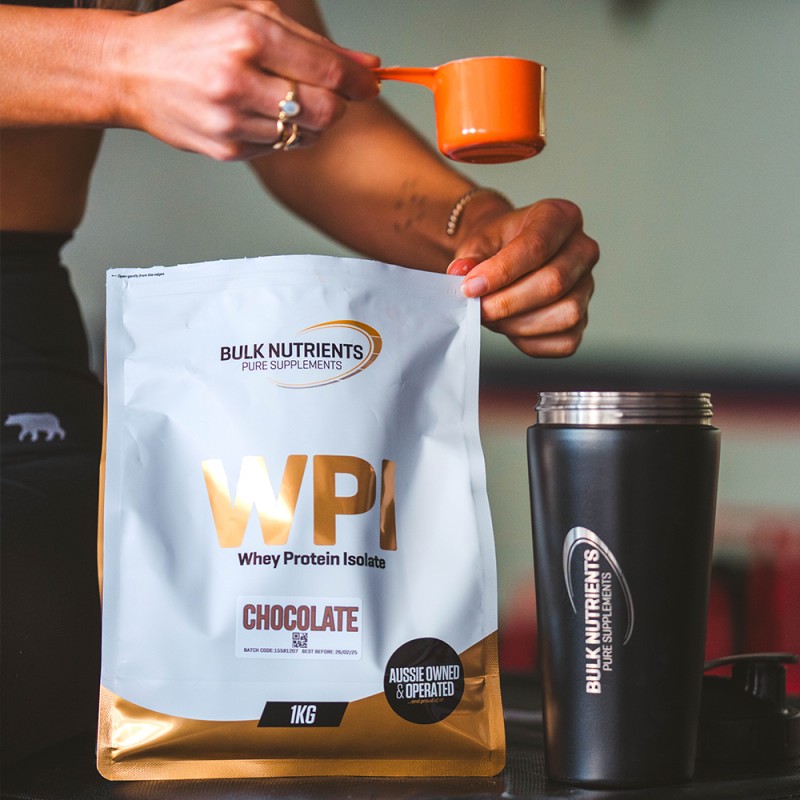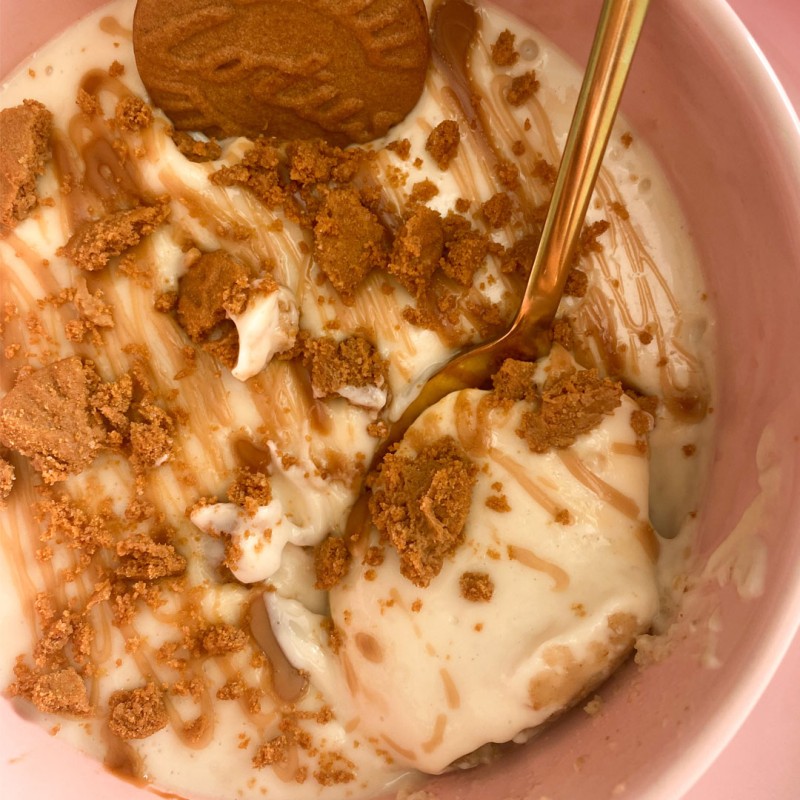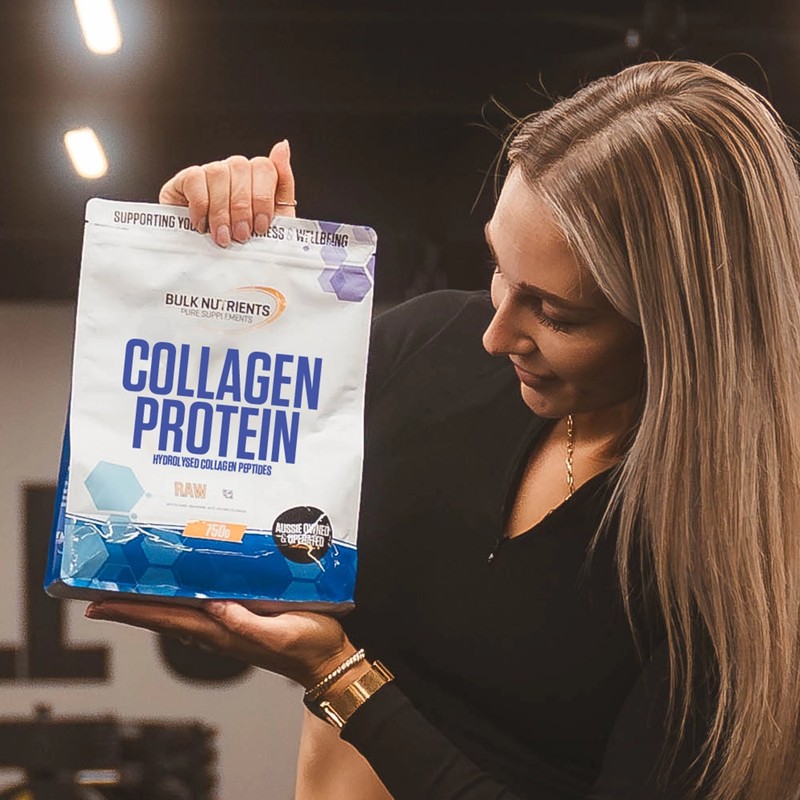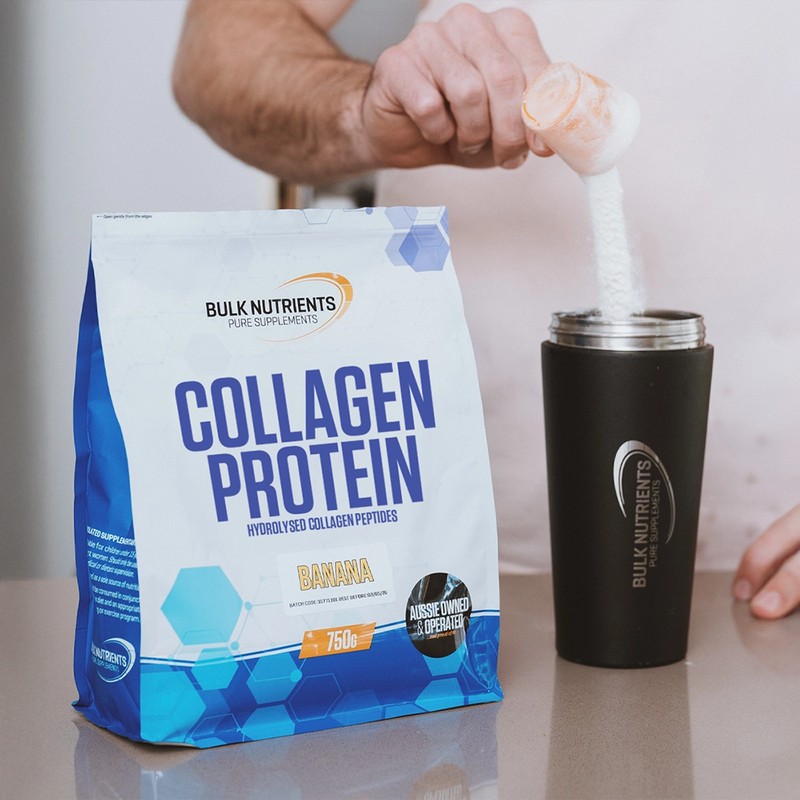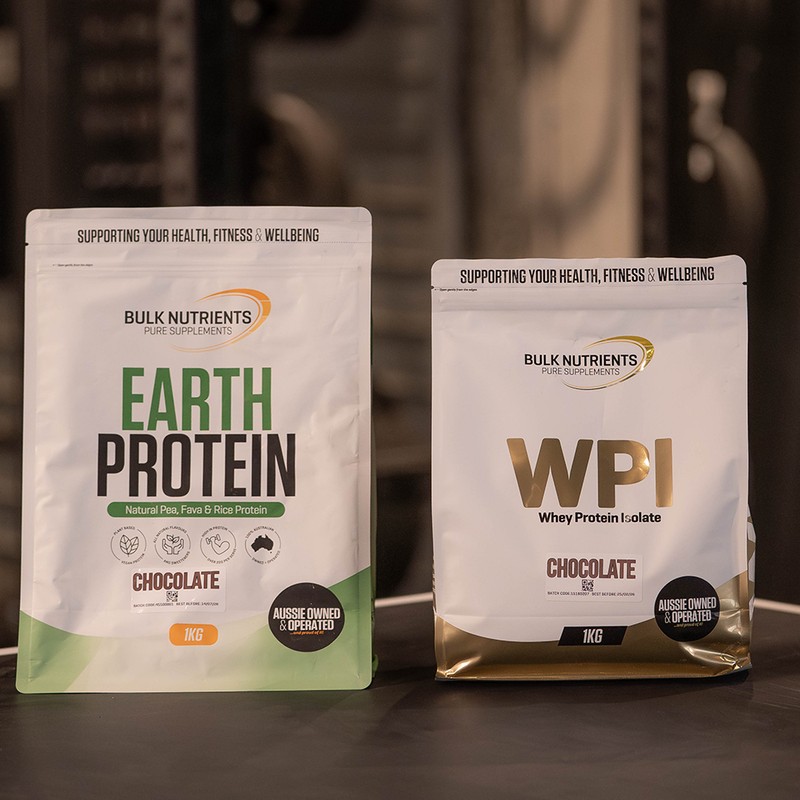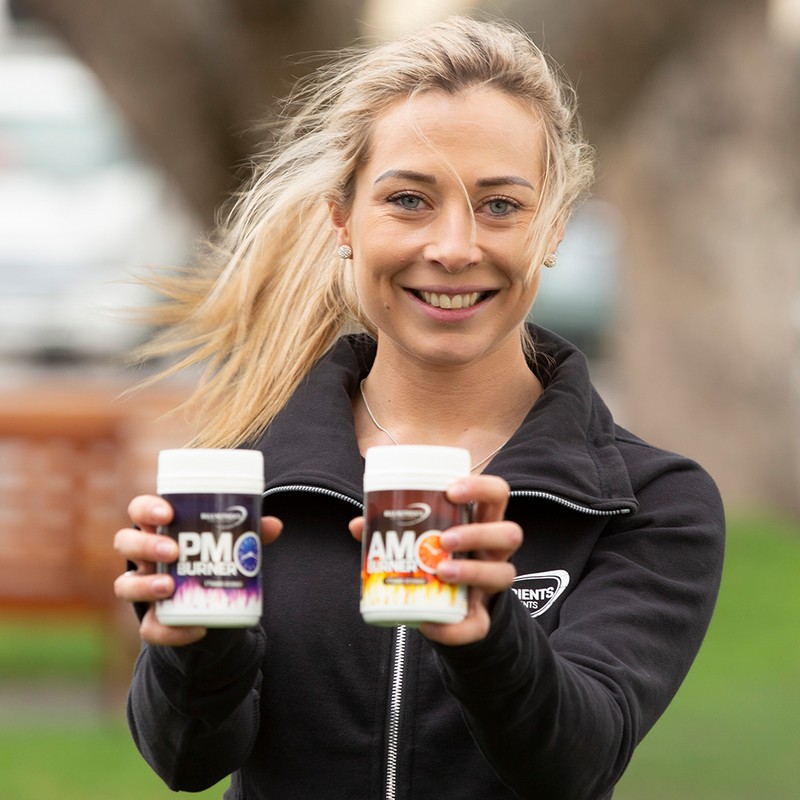10 Ingredients to Boost Your Protein Shake

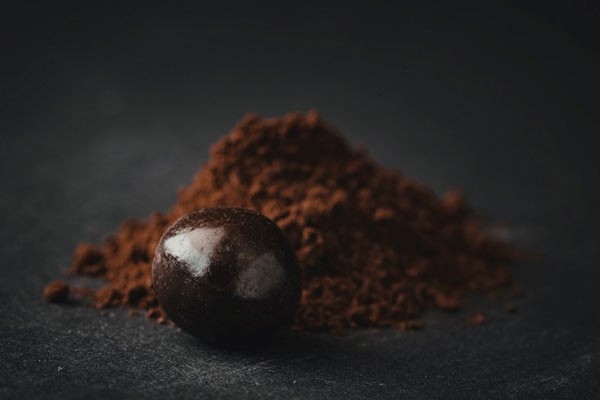
1. A tablespoon of Cacao to improve your mood
Derived from Cacao beans found in the forests in Latin America, this fine powder possesses many health-boosting benefits.
Cacao is rich in micronutrients known as polyphenols, which have been shown to possess anti-inflammatory properties as well as improving LDL cholesterol (the bad kind) levels.
Due to its high concentration of flavonoids, cacao may help improve blood vessel function.
The boost in nitric oxide leads to improved blood flow, including the blood supply to the brain, which has been shown to produce cognitive enhancement, decrease stress and have positive effects on our mood.
Moreover, cacao’s favourable effects on the hormone insulin mean it can also play an important role in maintaining healthy blood sugar levels.
Pop a tablespoon of cacao into your Bulk Nutrients protein shake to add a rich flavoursome kick!
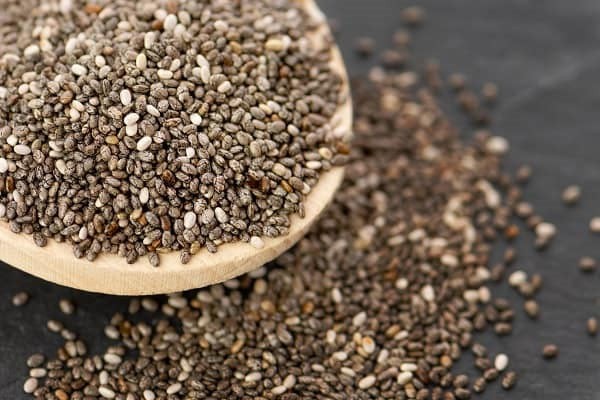
2. Chia Seeds will pack your smoothie full of Omega 3, key minerals, and antioxidants
Pound for pound perhaps the most powerful ingredient on this list, Chia Seeds deliver huge amounts of nutrients in relatively small doses, and boast 30% fibre: 30-34 grams of fibre per 100 grams!
This added fibre to your protein shake can aid in weight loss by helping you feel fuller for longer.
Chia seeds are also full of Omega 3 fats and make up approximately 30 per cent of the RDI (recommended daily intake) of magnesium, phosphorus and manganese in a 2 tablespoon serving.
Furthermore, the high antioxidant content in Chia Seeds aids the body in fighting against the production of free radicals, meaning these tiny seeds will pack a health-favourable punch to any shake.
Shoot for 15-20 grams of Chia Seeds with your shake.
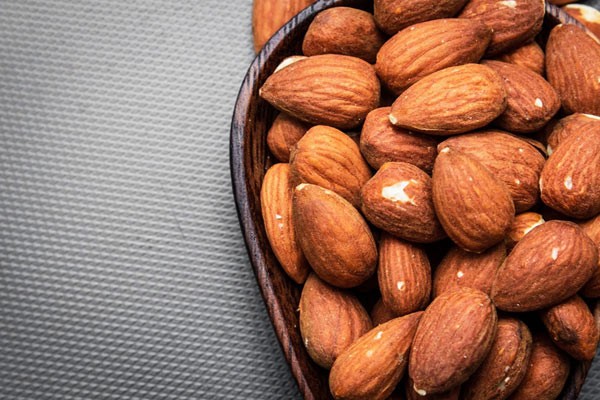
3. Add some healthy fats and a creamy texture with Almond butter
Need to add a little creaminess to your shake? Almond butter has many health-boosting nutrients, including vitamin E, which has been shown to help prevent the development of plaque in our arteries.
The high amount of monounsaturated fats found in Almond Butter help to decreasel LDL cholesterol whilst increasing its healthier brother HDL cholesterol. This can be very beneficial for heart health! Being high in calcium too, almond butter can also help us maintain healthy blood pressure.
If your protein shake needs some more creaminess and nutty goodness -- look no further than a tablespoon of this little treat!

4. Blend in some nutritious leafy green Spinach
More likely to be found in a salad, don't dismiss the possibility of throwing this nutritious leafy green into the blender!
Spinach provides the body with large amounts of the vital vitamins and minerals that we need to function and thrive, including Vitamin A, Vitamin B6 and B9, Vitamin C, calcium and iron.
Moreover, the plant compounds in spinach such as nitrates and lutein have been found to promote heart health and eye health.
Like many of the other ingredients on this list, spinach also contains antioxidants that have been shown to help prevent oxidative damages to the body, which is important for nurturing healthy functioning organs.
100 grams will do the trick!
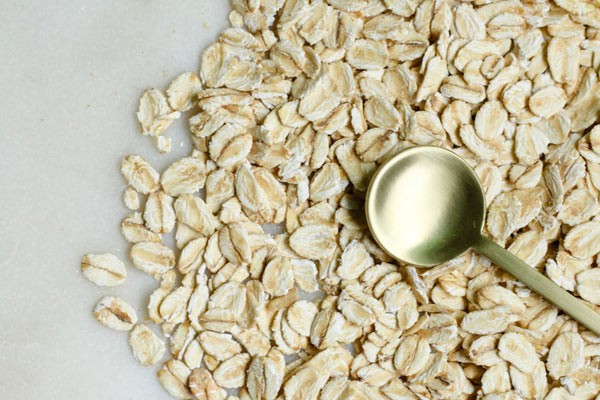
5. Whole grain oats in your shake helps you feel fuller for longer
A well balanced and versatile source of nutrients, whole grain oats are packed with energy delivering carbohydrates, protein, healthy fats, fibre, and vitamins and minerals.
Oats contain the powerful soluble fibre beta-glucan, which has been shown to reduce LDL cholesterol, promote healthy gut bacteria and regulate our blood sugar.
Beta-glucan also promotes the release of the satiety hormone Peptide YY which helps us feel full for longer -- perfect if you’re trying to lose weight!
Moreover, Avenanthramides are polyphenols found exclusively in oats which increase the production of nitric oxide. This can lead to better blood flow and may help us to lower blood pressure.
Add half a cup of wholegrain oats to your next Bulk Nutrients protein shake, and watch it turn into a thick, satisfying and nutrient-dense smoothie!

6. Add Bananas for natural sweetness that's packed with important minerals
The world's second most popular fruit is popular for many very good reasons: they provide the body with many of the most important nutrients.
An excellent fuel source for training and competition, the easily digestible natural sugars make bananas an ideal addition to a pre workout shake.
Bananas are a valuable source of magnesium and potassium, important for regulating blood pressure and promoting heart health.
Bananas go well with almost any flavour of our protein powders, so add this flavoursome fruit whenever you want!
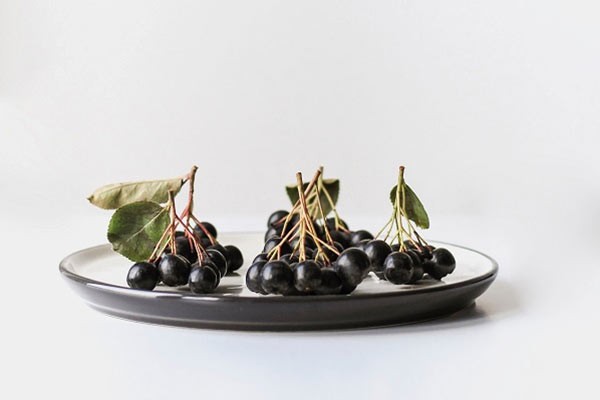
7. Add superfruit Acai berries to protect your brain and heart
This Amazonian superfruit has blasted itself into the health stratosphere over the past decade, due to its potentially positive effect on the health of brain cells.
Acai contains multiple plant compounds including anthocyanins, which act as a powerful antioxidant for the body and play a positive role in maintaining cardiovascular health.
Moreover, Acai contains three times the amount of antioxidants as blueberries -- another fruit popular due to its health benefits.
Keep in mind: Acai berries are a superior option to some of the cafe Acai bowl options that contain many added sweeteners and thus calories!
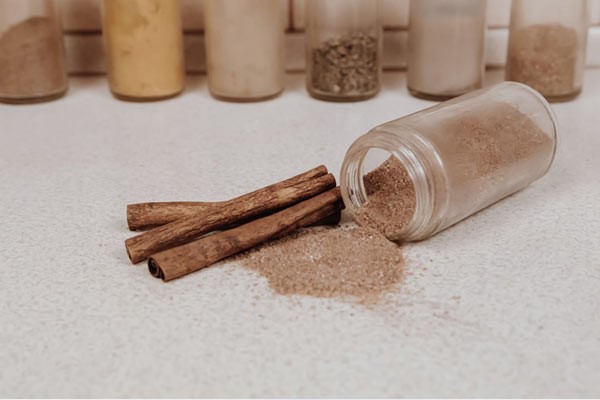
8. Spice up your smoothie with Cinnamon for better heart health
Jerry Seinfeld once paid the ultimate tribute to cinnamon: “Anytime someone says: ‘Ooh this is so good what's in this?’” The answer invariably comes back - CINNAMON!”
We think Jerry’s right on the money!
Studies suggest cinnamon can reduce LDL cholesterol, promote better heart health, and help us lower blood pressure.
Although more research is needed, at this stage, cinnamon’s anti-inflammatory properties contain numerous compounds that researchers think may be favourable to inhibiting Alzheimer's disease.
1-2 teaspoons of cinnamon will spice up your next shake!

9. MCT oil will give you the extra energy to tackle your day
Medium-chain triglyceride (MCT) oil has been shown to be a great inducer of satiety -- perfect for when fat loss is your goal!
Diets that include MCT oil have been shown to reduce LDL cholesterol, increase the production of HDL cholesterol, and aid in fat loss.
Moreover, due to its superior absorbability compared to long-chain triglycerides found in most fat sources, MCTs can be used as an instant energy source.
Two tablespoons will give you what you need!
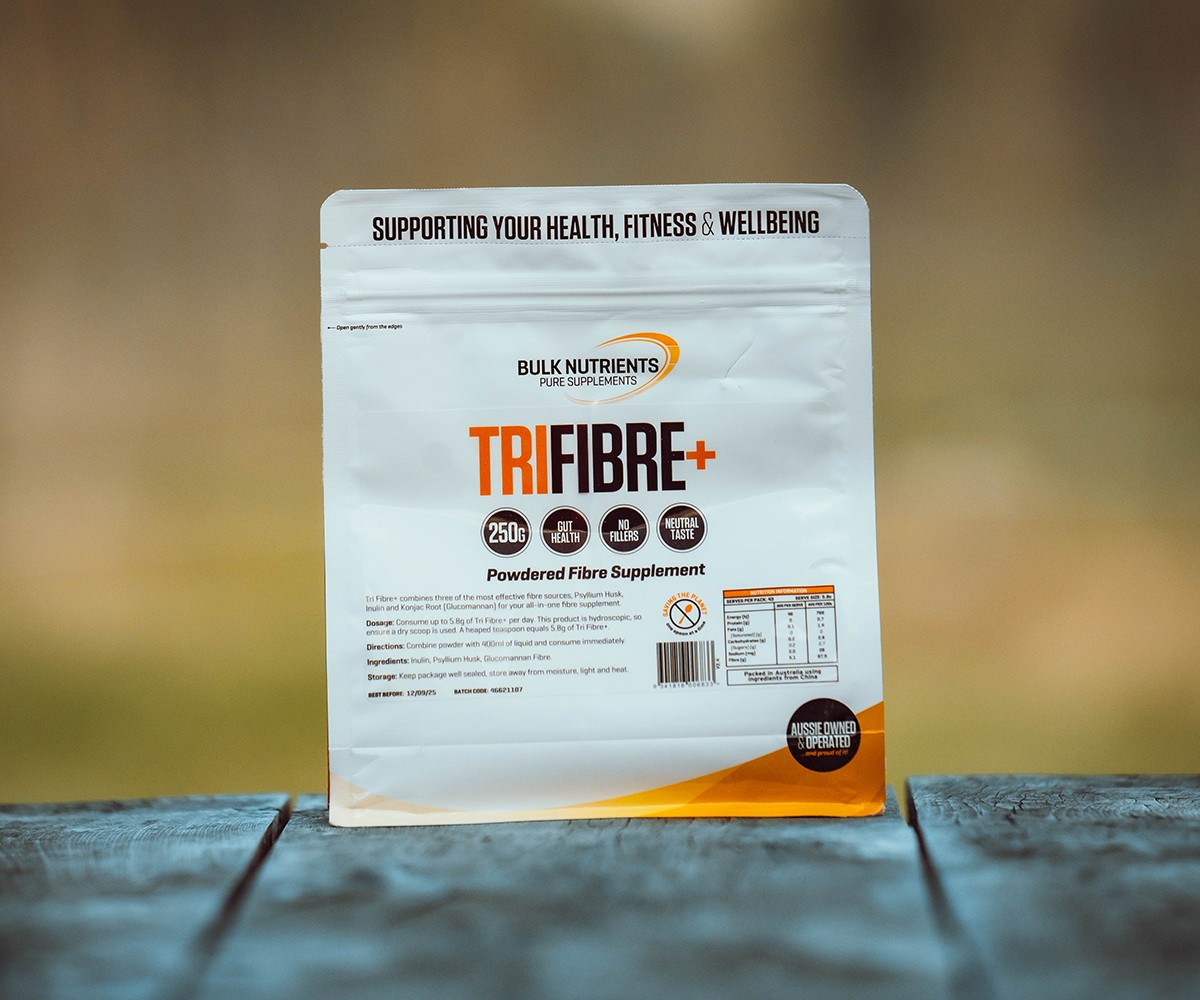
10. Tri Fibre+ supplement will help you to become more regular
In the perfect world, we’d get enough fibre every day: 50 grams to be exact. But we don’t live in the perfect world! So that’s why we have a fibre supplement for the days you can’t quite get enough.
Fibre is great for fat loss as it increases chewing time and delays the time it takes for food to pass through your stomach. This means you're fuller for longer and are less likely to overeat.
Moreover, fibre encourages the growth of a more favourable gut microbiome, associated with lower long-term weight gain. It’s for these reasons that researchers suggest that fibre allows for an "increased ease of weight loss".
Our Bulk Nutrients Tri Fibre+ supplement has 5 grams of fibre per serve, and can be a great addition to your shake daily!
So, there are ten ingredients you can swap out whenever you chose, for more flavour and potentially better health!
A final list of 10 nutrient-dense ingredients
In summary here is the final list of 10 nutrient-dense ingredients that will take your shake to the next level!
- Cacao - improves mood.
- Chia seeds - plant-based omega 3 and antioxidants.
- Almond butter - healthy fats and creamier texture.
- Spinach - packed full of nutrients.
- Whole grain oats - keeps you fuller for longer.
- Bananas - adds a sweet taste and contains key minerals.
- Acai berries - improve heart and brain health.
- Cinnamon - delicious taste and better heart health.
- MCT oil - instant energy boost.
- Tri Fibre+ - helps you to become more regular.
Add one, or two, or all of these to your next smoothie and enjoy the great taste and additional health benefits!
References:
- Ames, B.N., Shigenaga, M.K. and Hagen, T.M. (1993). Oxidants, antioxidants, and the degenerative diseases of aging. Proceedings of the National Academy of Sciences of the United States of America, [online] 90(17), pp.7915–7922. Available at: https://www.ncbi.nlm.nih.gov/pmc/articles/PMC47258/
- Beck, E.J., Tapsell, L.C., Batterham, M.J., Tosh, S.M. and Huang, X.-F. (2009). Increases in peptide Y-Y levels following oat beta-glucan ingestion are dose-dependent in overweight adults. Nutrition Research (New York, N.Y.), [online] 29(10), pp.705–709. Available at: https://pubmed.ncbi.nlm.nih.gov/19917449/
- Braaten JT, Wood PJ, Scott FW, Wolynetz MS, Lowe MK, Bradley-White P, Collins MW. Oat beta-glucan reduces blood cholesterol concentration in hypercholesterolemic subjects. Eur J Clin Nutr. 1994 Jul;48(7):465-74. PMID: 7956987.
- Bruckdorfer R. The basics about nitric oxide. Mol Aspects Med. 2005 Feb-Apr;26(1-2):3-31. doi: 10.1016/j.mam.2004.09.002. Epub 2005 Jan 24. PMID: 15722113.
- Chen, J. (2008). Beta-glucans in the treatment of diabetes and associated cardiovascular risks. Vascular Health and Risk Management, Volume 4, pp.1265–1272.
- Chicco, A.G., D’Alessandro, M.E., Hein, G.J., Oliva, M.E. and Lombardo, Y.B. (2009). Dietary chia seed (Salvia hispanica L.) rich in alpha-linolenic acid improves adiposity and normalises hypertriacylglycerolaemia and insulin resistance in dyslipaemic rats. The British Journal of Nutrition, [online] 101(1), pp.41–50. Available at: https://pubmed.ncbi.nlm.nih.gov/18492301/
- Earling M, Beadle T, Niemeyer ED. Açai Berry (Euterpe oleracea) Dietary Supplements: Variations in Anthocyanin and Flavonoid Concentrations, Phenolic Contents, and Antioxidant Properties. Plant Foods Hum Nutr. 2019 Sep;74(3):421-429. doi: 10.1007/s11130-019-00755-5. PMID: 31280417.
- Fox, C., Ramsoomair, D. and Carter, C. (2001). Magnesium: its proven and potential clinical significance. Southern Medical Journal, [online] 94(12), pp.1195–1201. Available at: https://pubmed.ncbi.nlm.nih.gov/11811859/
- Grundy MM, Lapsley K, Ellis PR. A review of the impact of processing on nutrient bioaccessibility and digestion of almonds. Int J Food Sci Technol. 2016;51(9):1937-1946. doi:10.1111/ijfs.13192
- Gunawardena, D., Karunaweera, N., Lee, S., van Der Kooy, F., Harman, D.G., Raju, R., Bennett, L., Gyengesi, E., Sucher, N.J. and Münch, G. (2015). Anti-inflammatory activity of cinnamon (C. zeylanicum and C. cassia) extracts – identification of E-cinnamaldehyde and o-methoxy cinnamaldehyde as the most potent bioactive compounds. Food & Function, 6(3), pp.910–919.
- Haytowitz, D. and Bhagwat, S. (2010). USDA Database for the Oxygen Radical Absorbance Capacity (ORAC) of Selected Foods, Release 2. [online]. Available at: https://www.researchgate.net/profile/Br-Rajeswara-Rao/post/How_can_I_calculate_antioxidant_activity_for_plants/attachment/59d63caac49f478072ea8056/AS%3A273752904929280%401442279186294/download/usda_antioxidant_table.pdf
- Jaramillo Flores, M. (2019). Cocoa Flavanols: Natural Agents with Attenuating Effects on Metabolic Syndrome Risk Factors. Nutrients, 11(4), p.751.
- Jebb SA. Dietary determinants of obesity. Obes Rev. 2007 Mar;8 Suppl 1:93-7. doi: 10.1111/j.1467-789X.2007.00326.x. PMID: 17316310.
- Karra, E., Chandarana, K. and Batterham, R.L. (2009). The role of peptide YY in appetite regulation and obesity. The Journal of Physiology, 587(1), pp.19–25.
- Kerimi, A. and Williamson, G. (2015). The cardiovascular benefits of dark chocolate. Vascular Pharmacology, 71, pp.11–15.
- Khan, A., Safdar, M., Ali Khan, M.M., Khattak, K.N. and Anderson, R.A. (2003). Cinnamon Improves Glucose and Lipids of People With Type 2 Diabetes. Diabetes Care, 26(12), pp.3215–3218.
- Krinsky, N.I., Landrum, J.T. and Bone, R.A. (2003). Biologic mechanisms of the protective role of lutein and zeaxanthin in the eye. Annual Review of Nutrition, [online] 23, pp.171–201. Available at: https://pubmed.ncbi.nlm.nih.gov/12626691/
- Kulczyński B, Kobus-Cisowska J, Taczanowski M, Kmiecik D, Gramza-Michałowska A. The Chemical Composition and Nutritional Value of Chia Seeds-Current State of Knowledge. Nutrients. 2019;11(6):1242. Published 2019 May 31. doi:10.3390/nu11061242
- Lobo V, Patil A, Phatak A, Chandra N. Free radicals, antioxidants and functional foods: Impact on human health. Pharmacogn Rev. 2010;4(8):118-126. doi:10.4103/0973-7847.70902
- Martínez-Cruz, O. and Paredes-López, O. (2014). Phytochemical profile and nutraceutical potential of chia seeds (Salvia hispanica L.) by ultra high performance liquid chromatography. Journal of Chromatography A, 1346, pp.43–48.
- Menni C, Jackson MA, Pallister T, Steves CJ, Spector TD, Valdes AM. Gut microbiome diversity and high-fibre intake are related to lower long-term weight gain. Int J Obes (Lond). 2017 Jul;41(7):1099-1105. doi: 10.1038/ijo.2017.66. Epub 2017 Mar 13. PMID: 28286339; PMCID: PMC5500185.
- Miketinas DC, Bray GA, Beyl RA, Ryan DH, Sacks FM, Champagne CM. Fiber Intake Predicts Weight Loss and Dietary Adherence in Adults Consuming Calorie-Restricted Diets: The POUNDS Lost (Preventing Overweight Using Novel Dietary Strategies) Study. J Nutr. 2019 Oct 1;149(10):1742-1748. doi: 10.1093/jn/nxz117. PMID: 31174214; PMCID: PMC6768815.
- Moser, B., Szekeres, T., Bieglmayer, C., Wagner, K.-H., Mišík, M., Kundi, M., Zakerska, O., Nersesyan, A., Kager, N., Zahrl, J., Hoelzl, C., Ehrlich, V. and Knasmueller, S. (2011). Impact of spinach consumption on DNA stability in peripheral lymphocytes and on biochemical blood parameters: results of a human intervention trial. European Journal of Nutrition, 50(7), pp.587–594.
- Nie, L., Wise, M.L., Peterson, D.M. and Meydani, M. (2006). Avenanthramide, a polyphenol from oats, inhibits vascular smooth muscle cell proliferation and enhances nitric oxide production. Atherosclerosis, [online] 186(2), pp.260–266. Available at: https://pubmed.ncbi.nlm.nih.gov/16139284/
- NORRIS, F.H., GASTEIGER, E.L. and CHATFIELD, P.O. (1957). An electromyographic study of induced and spontaneous muscle cramps. Electroencephalography and clinical neurophysiology, [online] 9(1), pp.139–47. Available at: https://pubmed.ncbi.nlm.nih.gov/13404940/
- Peterson, D.W., George, R.C., Scaramozzino, F., LaPointe, N.E., Anderson, R.A., Graves, D.J. and Lew, J. (2009). Cinnamon extract inhibits tau aggregation associated with Alzheimer’s disease in vitro. Journal of Alzheimer’s disease: JAD, [online] 17(3), pp.585–597. Available at: https://pubmed.ncbi.nlm.nih.gov/19433898/
- Poulose SM, Fisher DR, Bielinski DF, Gomes SM, Rimando AM, Schauss AG, Shukitt-Hale B. Restoration of stressor-induced calcium dysregulation and autophagy inhibition by polyphenol-rich açaí (Euterpe spp.) fruit pulp extracts in rodent brain cells in vitro. Nutrition. 2014 Jul-Aug;30(7-8):853-62. doi: 10.1016/j.nut.2013.11.011. Epub 2013 Dec 5. PMID: 24985004.
- Qin, B., Panickar, K.S. and Anderson, R.A. (2010). Cinnamon: Potential Role in the Prevention of Insulin Resistance, Metabolic Syndrome, and Type 2 Diabetes. Journal of Diabetes Science and Technology, [online] 4(3), pp.685–693. Available at: https://www.ncbi.nlm.nih.gov/pmc/articles/PMC2901047/
- Rasane P, Jha A, Sabikhi L, Kumar A, Unnikrishnan VS. Nutritional advantages of oats and opportunities for its processing as value added foods - a review. J Food Sci Technol. 2015 Feb;52(2):662-75. doi: 10.1007/s13197-013-1072-1. Epub 2013 Jun 25. PMID: 25694675; PMCID: PMC4325078.
- Rial, S., Karelis, A., Bergeron, Karl-F. and Mounier, C. (2016). Gut Microbiota and Metabolic Health: The Potential Beneficial Effects of a Medium Chain Triglyceride Diet in Obese Individuals. Nutrients, 8(5), p.281.
- Rosique-Esteban N, Guasch-Ferré M, Hernández-Alonso P, Salas-Salvadó J. Dietary Magnesium and Cardiovascular Disease: A Review with Emphasis in Epidemiological Studies. Nutrients. 2018;10(2):168. Published 2018 Feb 1. doi:10.3390/nu10020168
- Scholey, A. and Owen, L. (2013). Effects of chocolate on cognitive function and mood: a systematic review. Nutrition Reviews, 71(10), pp.665–681.
- Schönfeld, P. and Wojtczak, L. (2016). Short- and medium-chain fatty acids in energy metabolism: the cellular perspective. Journal of Lipid Research, [online] 57(6), pp.943–954. Available at: https://www.ncbi.nlm.nih.gov/pmc/articles/PMC4878196/
- Seth, A., Mossavar-Rahmani, Y., Kamensky, V., Silver, B., Lakshminarayan, K., Prentice, R., Van Horn, L. and Wassertheil-Smoller, S. (2014). Potassium intake and risk of stroke in women with hypertension and nonhypertension in the Women’s Health Initiative. Stroke, [online] 45(10), pp.2874–2880. Available at: https://pubmed.ncbi.nlm.nih.gov/25190445/
- Sozen, E., Demirel, T. and Ozer, N.K. (2019). Vitamin E: Regulatory role in the cardiovascular system. IUBMB Life, 71(4), pp.507–515.
- St-Onge, M.-P., Bosarge, A., Goree, L.L.T. and Darnell, B. (2008). Medium Chain Triglyceride Oil Consumption as Part of a Weight Loss Diet Does Not Lead to an Adverse Metabolic Profile When Compared to Olive Oil. Journal of the American College of Nutrition, [online] 27(5), pp.547–552. Available at: https://www.ncbi.nlm.nih.gov/pmc/articles/PMC2874191/
- Tang, Y., Jiang, H. and Bryan, N.S. (2011). Nitrite and nitrate: cardiovascular risk-benefit and metabolic effect. Current Opinion in Lipidology, [online] 22(1), pp.11–15. Available at: https://pubmed.ncbi.nlm.nih.gov/21102328/
- Udani, J.K., Singh, B.B., Singh, V.J. and Barrett, M.L. (2011). Effects of Açai (Euterpe oleracea Mart.) berry preparation on metabolic parameters in a healthy overweight population: A pilot study. Nutrition Journal, 10(1).
- Valeur, J., Puaschitz, N.G., Midtvedt, T. and Berstad, A. (2016). Oatmeal porridge: impact on microflora-associated characteristics in healthy subjects. The British Journal of Nutrition, [online] 115(1), pp.62–67. Available at: https://pubmed.ncbi.nlm.nih.gov/26511097/
- Whitehead, A., Beck, E.J., Tosh, S. and Wolever, T.M. (2014). Cholesterol-lowering effects of oat β-glucan: a meta-analysis of randomized controlled trials. The American Journal of Clinical Nutrition, 100(6), pp.1413–1421
Related Blogs
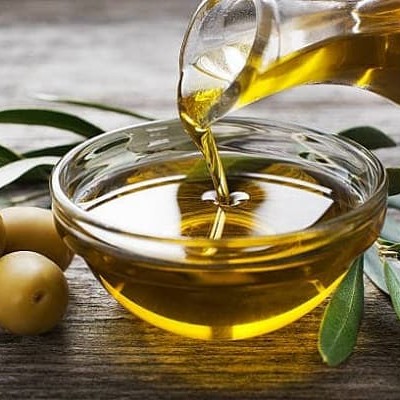
Olive Oil Might Help Us Live Longer
Posted by Bulk Nutrients
Estimated reading time: 5 minutes
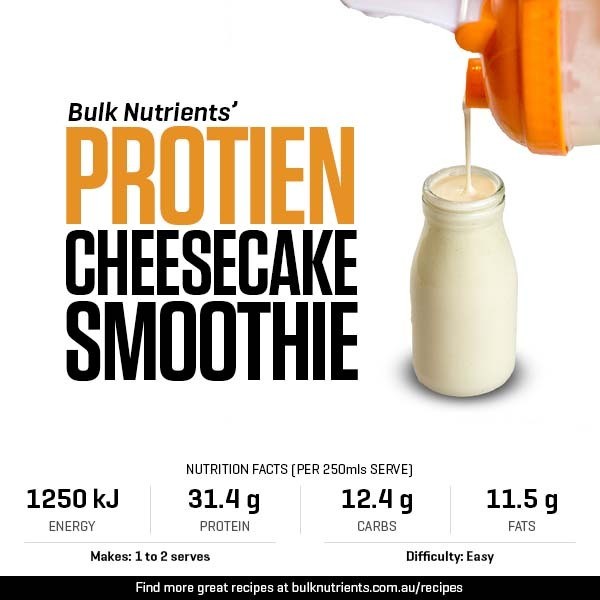
Protein Cheesecake Smoothie
Posted by Nicole Frain
Recipe difficulty: Easy
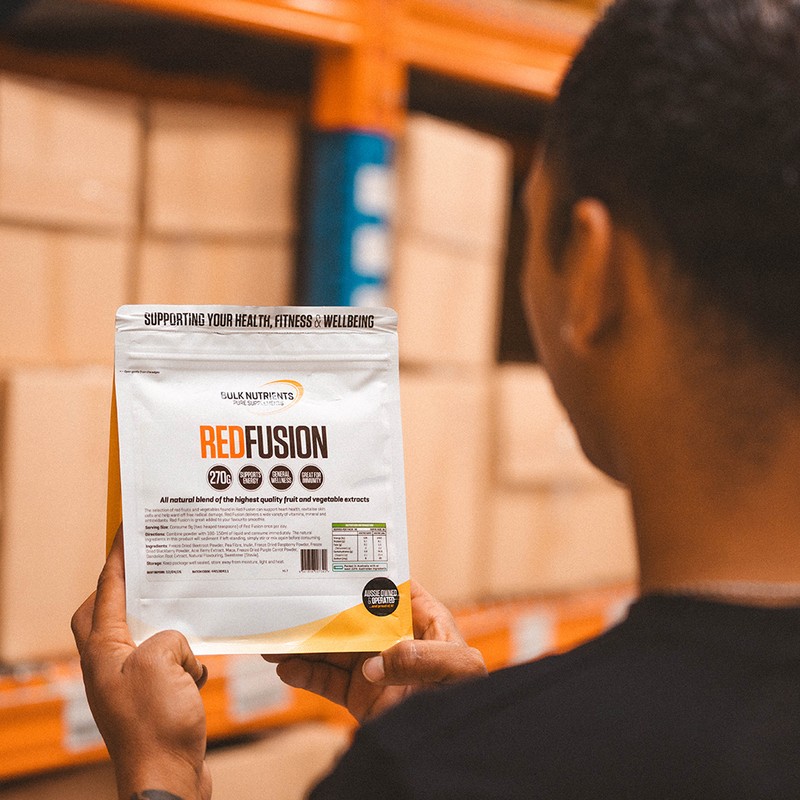
Natural – The Bulk Nutrients way
Posted by Ryan Bevan
Estimated reading time: 4 minutes
